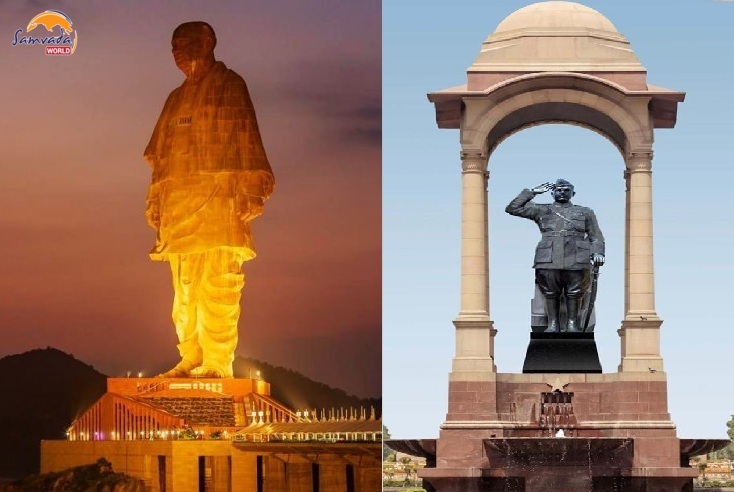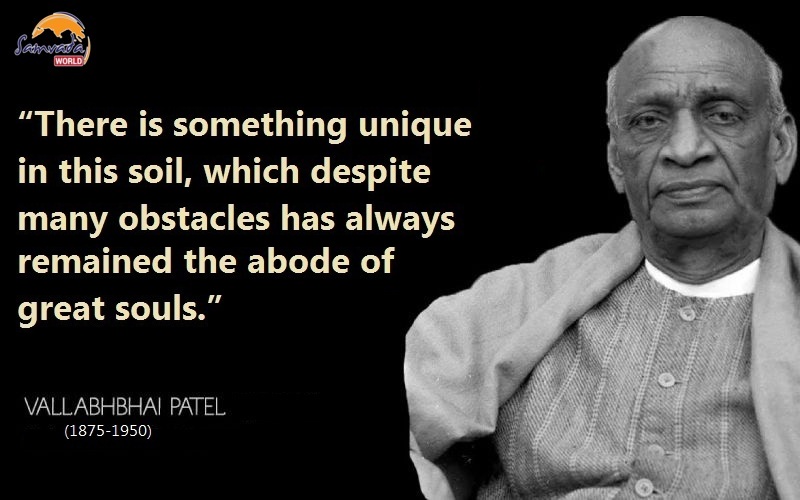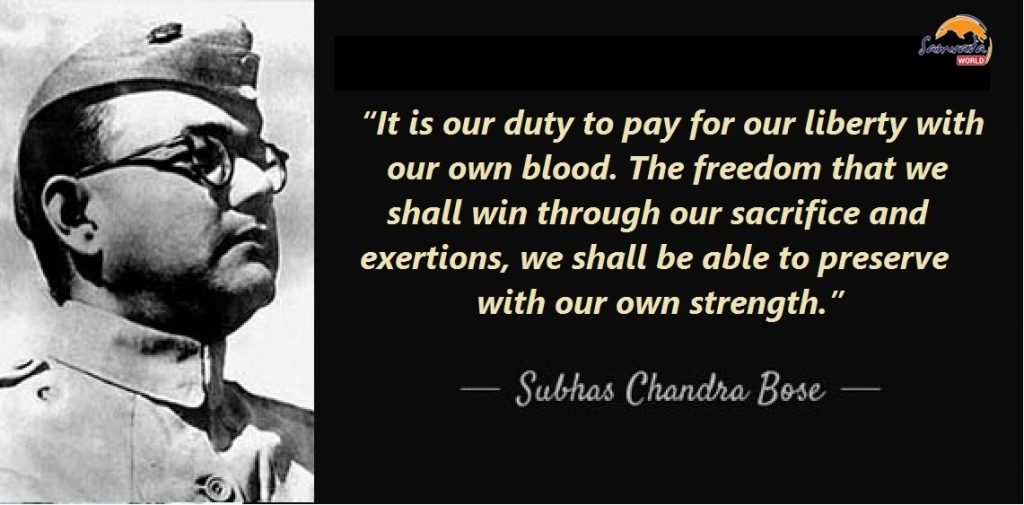
- We the common people must understand that these statues are in the interest of the nation and for our future generations.
- Common people should put aside political arguments and focus on what we should read from these statues so that we pass on meaningful messages to our future generations.
- We are well educated about a few people’s work, decisions, contributions through textbooks, art & cinema, names of public infrastructure and awards
- But the lack of information about many others who made equally important contributions in shaping the destiny of our nation is huge
The ‘Statue of Unity‘ is a testimonial to the life of Sardar Patel, a role model of unity and statesmanship. The tallest statue of the world enjoys a splendidly scenic location facing the Sardar Sarovar Dam, 3.2 kilometres away. This colossal statue stands on the isle of Sadhu-Bet in River Narmada, at Ekta Nagar, District Rajpipla in the Indian State of Gujarat, with the majestic Vindhyachal and Satpura Mountain Ranges in the backdrop. The statue is fast becoming one of the country’s top tourist attractions. Aimed to inspire generations, the statue showcases Sardar Vallabhbhai Patel’s vision on unity, patriotism, inclusive growth and good governance.
Marking Netaji’s 125th birth anniversary, the hologram statue of Netaji Subhash Chandra Bose was installed under the canopy where a statue of King George V had stood till its removal in 1968. The statue, in black granite, would be made by a team of artists headed by the National Gallery of Modern Art, Delhi. Till the statue is completed, the hologram would be switched on at sunset every day.
As we observe Azadi ka Amrit Mahotsav (75th year of Independence) across the nation, we as the citizens of this great nation must reiterate our commitment to always uphold Sovereignty, Integrity, Unity, Diversity, and Divinity (The collective best of values we inherited from all our ancestors) of our land. In recent times, unveiling the statues of iconic patriots have been the most discussed event more so since 2014. The statues of Sardar Patel and that of Netaji Bose have had a bigger share of the time. We the common people must understand that these statues are in the interest of the nation and for our future generations.

But before that, let us try to settle some heated arguments made on this topic. Often, we hear that statues are being erected for the political appropriation of our national icons, pitching national heroes against each other etc, while some say these are to diminish the stature of Mahatma Gandhi or Pandit Nehru. Let us be clear on a few facts about such concerns and allegations.
- The problem is NOT what is being done after 2014. The REAL problem is what was NOT DONE till 2014.
- The icons being discussed here were all champion patriots with absolute honesty and integrity. They never saw each other as an adversary or enemy before independence. The problem is how they were treated by us, the society post-independence.
- The biggest disservice to Mahatma Gandhi has been done by those who claim the ownership of Gandhian values for never letting the younger generations freely express their thoughts over his ideas, actions, and decisions. Let us be very clear that the younger generation values and respects Mahatma Gandhi many times more than those who claim ownership of his values. Further, there is no confusion or dispute whatsoever to credit Mahatma for taking the idea of freedom to the common masses and thus making the freedom movement a people’s movement.
- Nation fondly remembers Pandit Nehru for his contribution. I consider him one of the key architects of independent India. It was under his leadership we saw constitutional institutions being built that stood strong and steered the nation through some of the political, financial, constitutional turbulence thus ensuring India remains democratic at any cost.
- Remember the much-deserved recognition of the icons through these statues is coming from the elected government of the day and inaugurated by the Prime Minister of the nation. So to put it in plain words, it is recognition by the people of the country.
So let us, the common people, put aside these political arguments and allegations and focus on what we should read from these statues so that we pass on meaningful messages to our future generations about our history. And this precisely is the focus of this write-up.
We all read history and honestly, we have a fascinating history that makes the reading not only enriching but also enjoyable. I strongly believe that we also have a purpose to read history…which is to learn from it. We must learn from events that happened in our history, the sequence of actions that lead to the events, key decisions that resulted in particular actions, and the people who were instrumental in making those decisions. Any historical event is the result of a combination of multiple actions and decisions made by multiple key people where each decision would have had its impact in one way or the other. Since education at various levels is the mainstream system where history is taught and learned. This learning evolves out as a public narrative through which society gets educated of history. The education system has to teach history the way it should be taught.
What is the right way to teach history then? In my view, the right way to teach history is to present all the decisions and actions that lead to historical events in the relevant circumstances and teach the students to analyse the decisions, actions, holistically and then decide what contributed more to the event and its impact on the future of the nation and society. Then we learn what kind of decisions and actions lead to the desired events, including understanding what leads to the undesired events. History must trust its future generations, present holistic facts and let the generation of the day decide what lessons to take away in the best interest of future generations. Unfortunately, this is where our history teaching faulted.

For more than six decades we were taught about selective decisions & actions taken by a selective set of people and by doing so generations of students were compelled to believe that these were only people who took the decisions and these were the only decisions that were taken and these are the only reason for the events that unfolded and whatever events that unfolded, all caused well for the country. Consequently, it was deemed that we must continue with the set of decisions taken by some select set of people to shape the future of the nation. This does not augur well for the nation and the society.
Unfortunately, this happened and continued for decades. We are well educated about a few people’s work, decisions, contributions, various movements, detailed speeches, etc through textbooks, narratives, art & cinema, the naming of public infrastructure and awards, and many more. The lack of information about many others who made equally important contributions in shaping the destiny of our nation is so huge but we hardly know the date of birth of such icons. How many of us can honestly claim to know about the contribution of other icons that is sufficient for a five minutes talk?
For example, how many of us know or knew that Netaji’s INA and Naval Rebellion inspired by INA were also decisively instrumental in India getting freedom? Or how many of us know about the painstaking details of Sardar Patel’s dialogues, consultations etc with 500+ princely states to have a collective agreement for one idea called Bharat? I doubt it and I will be happy if I am proven wrong!
Today is the high time to bridge this information gap. While textbooks and education are the right places to teach and bridge the gap, the gap is across generations and the social spectrum. So an eventful big bang approach with a massive reach that educates all sections of society and inspires people to know more to cover the information gap as much as possible is most required. Once the information gap is reduced to a large extent, the next logical step is to mainstream it through education. Statues, events etc must be seen in the context of covering the information gap and sincerely hope it eventually gets mainstreamed to give a 360° view of our history to students and citizens alike. Let people draw their conclusions of historical decisions, people, and events to derive the right lessons for the future of our nation.
(The opinions expressed are author’s own)

Awesome fact….keep enlightening us and many thanks for putting your thoughts straight..
Very nice
WOW! Very well written article driven by a progressive thinking. Harish stands out by not following the idealogy of “To glorify my lineage, I will demean your lineage” and infact he focused on how to address the issue at hand collectively… Good article indeed
Nice article Harish ji, I liked your idea of enabling future generation to access the full and correct history and placing a trust on them that they will decide in right direction. Till date for our generation, partial truth about freedom struggle is been told and some selective individuals have been highlighted as instrumental in getting freedom. Course correction is need of the hour. Congrats again for the article.
Very nice Artical Harish..as you rightly mentioned there is a GAP between facts and what got promoted. The only way is education and thant too from school going students.. this should have right history with facts and not as a Agenda of any political party.